After a successful partnership in the past with Climate Care, with contributions from Nature Travels guests offsetting a total of almost 800 tonnes of CO2, we have now moved our climate-focused donation programme to Rainforest Concern's project to protect and expand the Neblina Cloudforest in Ecuador.
While the protection of this enormously valuable forest habitat of course also has a significant carbon-sequestering benefit, this is not a "carbon offset" programme, but rather an effort to protect an area of forest which has high biodiversity and is of great value to the local community.
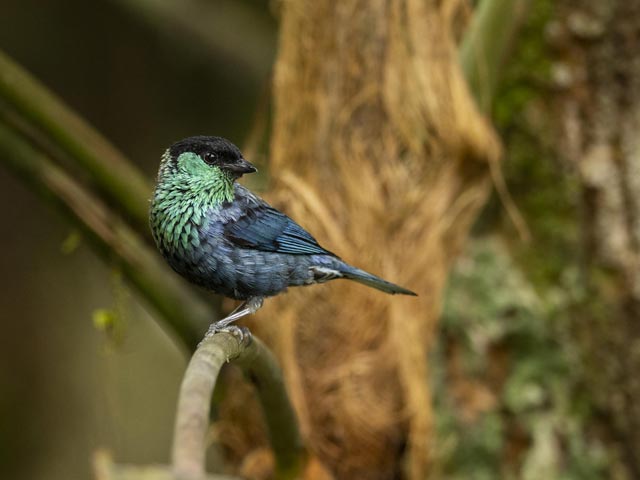
Photo: Murray Cooper for Rainforest Concern.
Annual Corporate Donations
In addition to the contributions made by our guests, each year we also make a corporation donation of a portion of our profits to support environmental and conservation projects.
2025: Species Monitoring in the Neblina Cloudforest Reserve
For 2025, our donation was used to purchase essential equipment for a species monitoring programme in the Neblina reserve, specifically ropes and harnesses to enable camera traps to be mounted in the rainforest canopy. Currently one camera has been set up, with another two planned, and although it has only been in place a short time, the camera has already captured some amazing and very important images!
The reserve has used camera traps at ground level for many years, but not in trees - tree work requires climbing equipment (which our donation purchased) as well as training of the local staff, and also it's not ideal to have cameras that need data manually downloading and batteries replacing, as it means climbing at heights twice, every three months. These new cameras are solar powered and hold their charge better, as the batteries can be recharged when they get sun, and also have bluetooth, enabling the rangers to download data from the ground, reducing the number of potentially hazardous climbs needed.
The first camera was installed above the known black-and-chestnut eagle nest in the Neblina Reserve, and soon captured the wonderful and heartwarming photo below - a nesting pair of black-and-chestnut eagles!
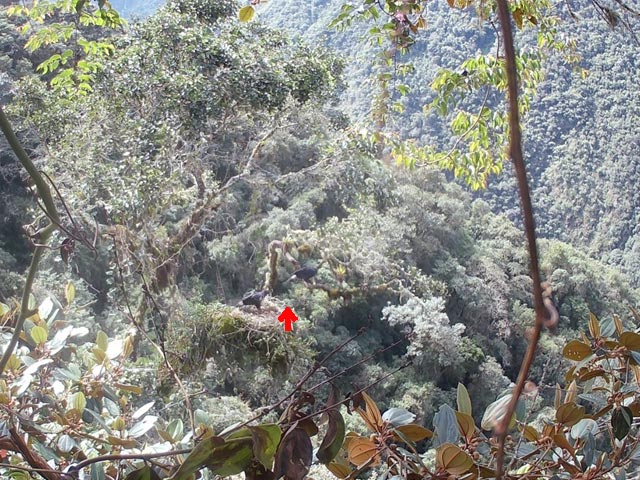
A nesting pair of black-and-chestnut eagles photographed with the new tree-mounted camera trap in the Neblina reserve. Photo: Nature Spy/Rainforest Concern.
This image is very significant. The black-and-chestnut eagle, Spizaetus isidori, is an Endangered Species, with a remaining estimated global population of just 250-999 individuals. Found on the slopes of the tropical Andes, they require undisturbed tropical montane cloud forest to survive. They build large nests in tall trees – often cecropia. The ongoing fragmentation and destruction of cloud forests mean their habitat has been declining for many years. As habitat becomes destroyed, threats to farmers' poultry increases, meaning persecution of the eagle is more likely. With the IUCN Red List putting numbers of individuals at only 250-999, in this one photo, we could be looking at almost 1% of the entire population of black-and-chestnut eagles!
The photo also clearly illustrates some of the very difficult terrain in which the rangers must operate to deploy the cameras.
As well as monitoring the eagles, Rainforest Concern has been working to educate communities in the importance of the species as well as trialling mitigation techniques to reduce the likelihood of eagles being killed by smallholders in the local communities.
We are so pleased to be able to make a small contribution to this vital conservation work. Rainforest Concern will be watching over the nest over the next few months, and hoping to see an egg on it soon - monitoring will take place from the ground, at a safe distance with binoculars during patrols and also with the camera traps.
Watch this space for further updates!
2024: Supporting Reserve Rangers in Ecuador with Essential Equipment
For 2024, our annual donation was used to purchase essential equipment for rangers working in the Rainforest Concern reserves in Ecuador, including machetes and clothing.
Trails in the Neblina Reserve have been improved and extended, with about 6km of new trails created following the purchase of additional forest to expand the reserve area.
The trails are needed to access these new areas so that the forest guards can monitor the health of the forest and check for any signs of illegal ingress or other issues.
Creation of the trails is part of the requirement of the new management plan drawn up together with the Ecuadorian Ministry of the Environment and one of the conditions of being granted three areas as "SNAP" (National System of Protected Area).

Clockwise from top left: Head Ranger Milton digs out a trail on the side of a steep bank; Milton cuts a trail through the undergrowth; Sonja inspects the new trail before sign-off; A forest guard uses his machete while patrolling the trail. Photos: Rainforest Concern.
We're delighted to be able to support this vital work with much-needed new equipment. Watch this space for further updates!
2023: Supporting Environmental Education in Ecuador
For 2023, Nature Travels supported Ecology Clubs in Plaza Gutierrez, a small community on the edge of the Neblina Reserve in Ecuador (see below for more information on the Neblina Reserve).
Update January 2024: See this report from the Ecology Clubs in Ecuador showing how the donation from 2023 was used.
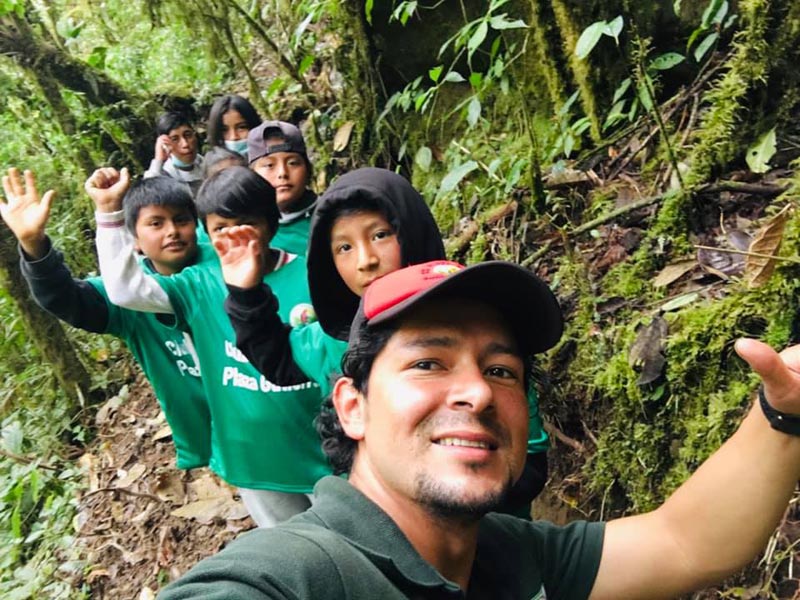
Photo: Rainforest Concern / Alex Bolaño.
The Ecology Clubs encourage local children to understand the importance of, enjoy and develop a relationship with the forest around them. Conservation efforts cannot ultimately succeed without the involvement and support of the local population. The Ecology Clubs project aims to foster an awareness and love of the natural environment that will hopefully last a lifetime and lead to the children of Plaza Gutierrez becoming active ambassadors for its preservation in the years to come.
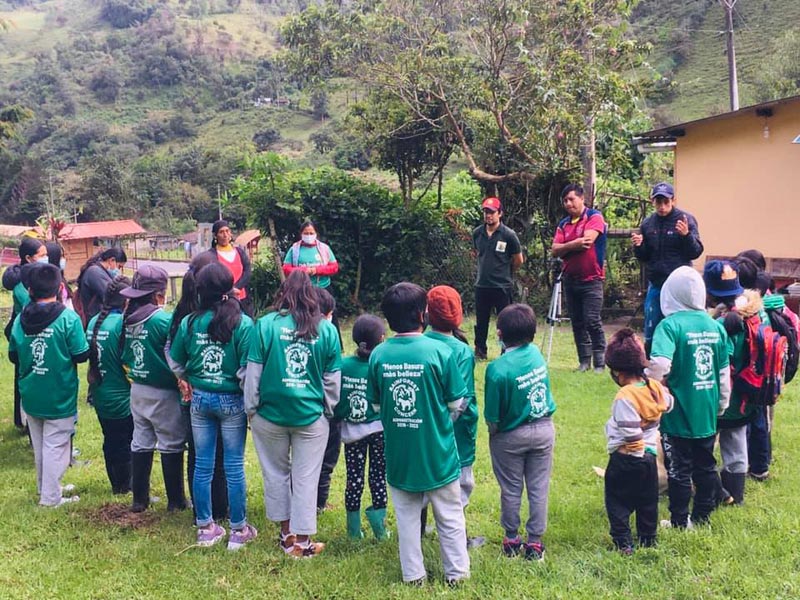
Photo: Rainforest Concern / Alex Bolaño.
The donation should fund the operation of two of the clubs in the area, each of which typically run around 12 field trips a year to the Neblina Reserve.
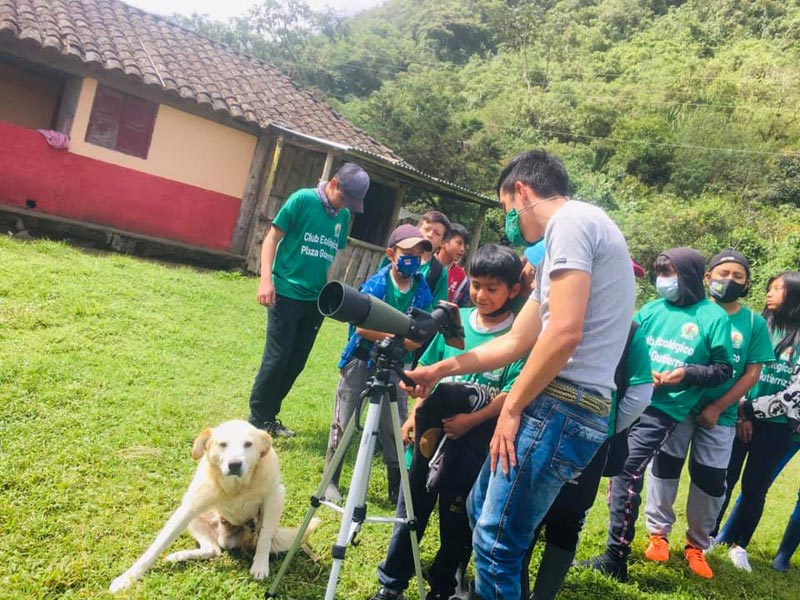
Photo: Rainforest Concern / Alex Bolaño.
Supporting the Neblina Reserve in north west Ecuador
When you make a booking with us, you have the option to make a voluntary donation (as standard, this is £5/person, but you're of course welcome to donate more or less if you wish), which we donate to Rainforest Concern on your behalf.
Every £50 we give to Rainforest Concern sponsors 1 acre of rare, tropical montane cloud forest in their Neblina Reserve. This funding is used to manage and protect the reserve, as well expand when the opportunity arises. The funds also support communities with sustainable income programmes and help provide environmental education, since changing attitudes and behaviour, and the support of the local community is key to long-term success.
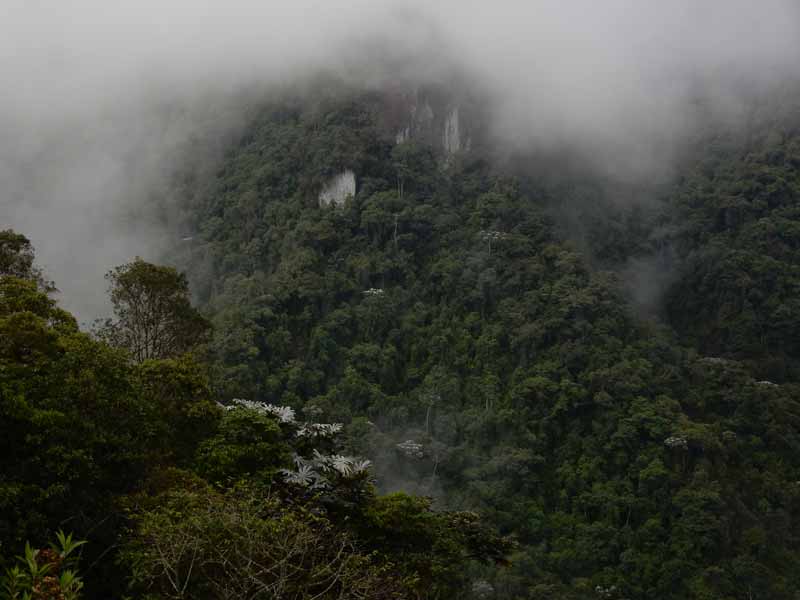
Cloud cover over Neblina. Photo: Rainforest Concern/ Oliver Whaley.
About the Neblina Reserve
Part of Rainforest Concern’s strategy is to create ecological corridors, to avoid the risk of habitat fragmentation. This greatly assists the effectiveness of reserves by enabling animals and species to seasonally migrate from one area to another and for natural seed dispersal to continue.
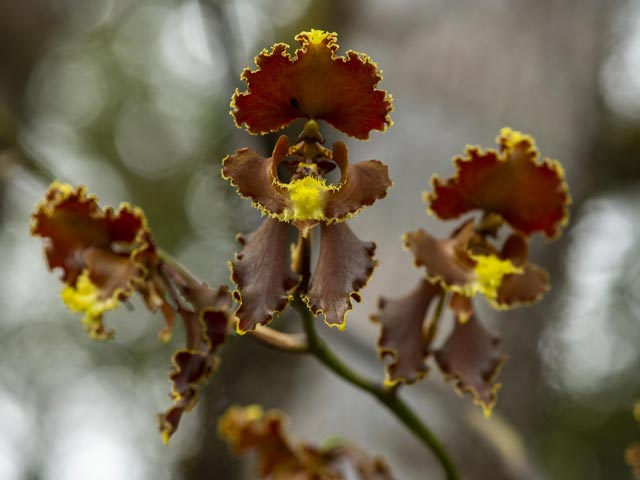
Photo: Murray Cooper for Rainforest Concern.
One such corridor is the Chocó Andean Corridor project, which began in 1993 in north west Ecuador with the aim of creating connectivity of forest habitat between protected areas and to protect important watersheds.
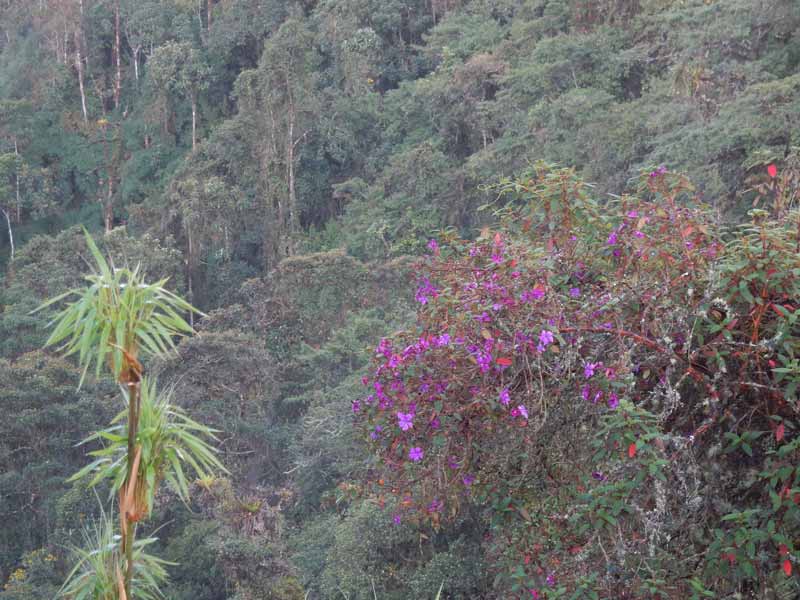
Tibouchina lepidota tree in flower in the Neblina reserve. Photo: Rainforest Concern/ Oliver Whaley.
Since 2003, Rainforest Concern has been creating a protected forest reserve, the Neblina Reserve, in the southern part of the Chocó Andean Corridor Project to act as a corridor between the Siempre Verde Reserve and National Cotacachi Cayapas Ecological Reserve in the north, and the Taminaga Grande Community Reserve to the south.
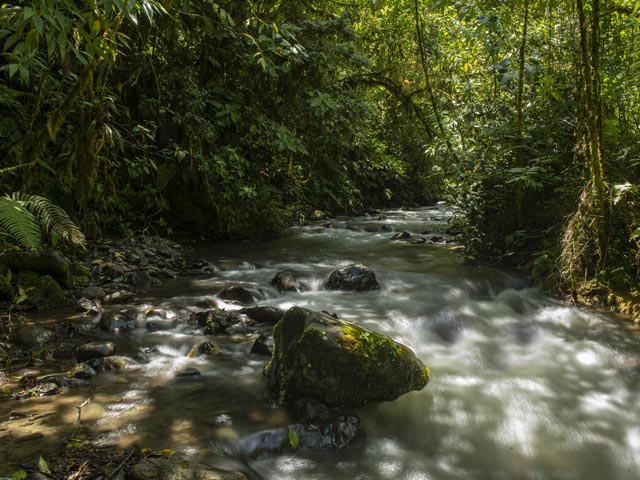
Photo: Murray Cooper for Rainforest Concern.
This region lies within the 'Tropical Andes' biodiversity hotspot; the most species rich of any of the world's 36 biodiversity hotspots. This region is predominantly tropical montane cloud forest, which accounts for just 2.5% of the world’s tropical forests but contains a disproportionate amount of the world’s biodiversity. Found at higher altitudes where the forest is typically frequently swathed in low-level clouds due to the cooling and condensing of moisture laden air, cloud forests play an important role in the water cycle, acting like giant sponges, capturing the water and then feeding the streams and rivers.
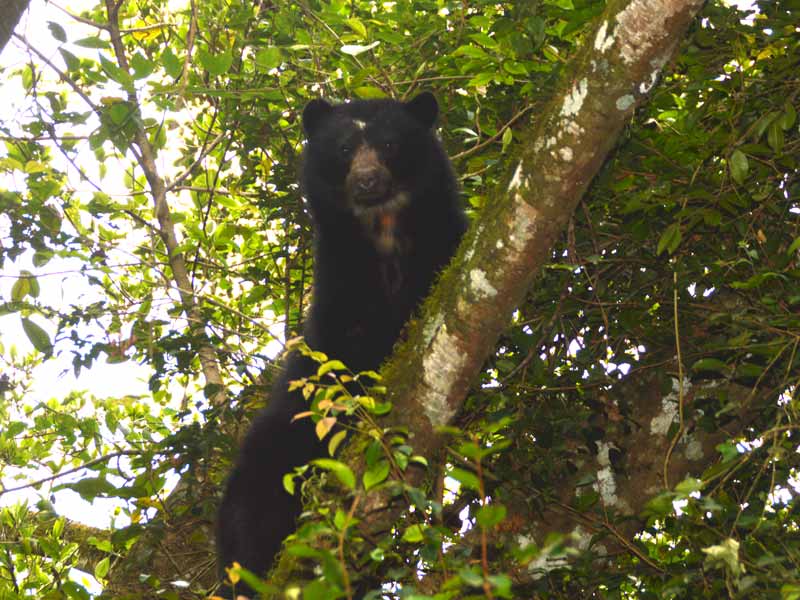
The Andean or Spectacled Bear, just one of the endemic species in the Neblina reserve. Photo: Rainforest Concern/ Tashkin Meza.
Among the many threatened species here are the recently discovered olinguito and rediscovered longnose harlequin frog, as well as the IUCN Red List critically endangered black and chestnut eagle. Other Red List species that are found here include Andean bear, mountain tapir, mantled howler monkey, the critically endangered brown-headed spider monkey, plate-billed mountain toucan, white-headed capuchin, jaguar, ocelot, puma, oncilla, Andean cock-of-the-rock, and many more. All of these species are listed as decreasing, and the IUCN states that the prime reason for this reason for this is the destruction of forest habitat. This means that the creation, extension and management of reserves and corridors is fundamental to countering this trend.
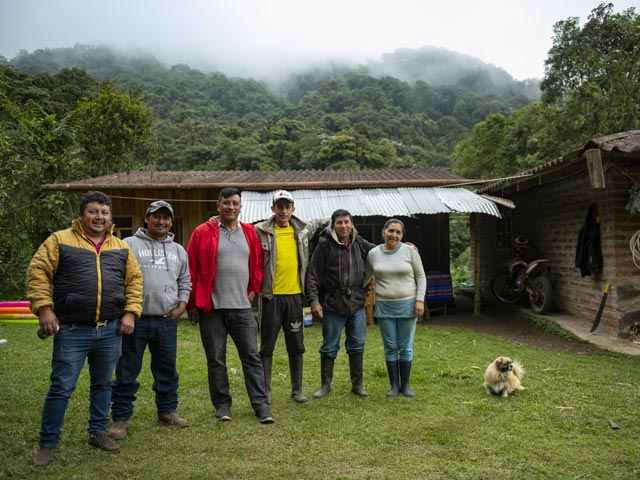
Some of the team of forest guards at the reserve. Photo: Murray Cooper for Rainforest Concern.
The forest in the Intag region, where the Neblina Reserve is situated, is threatened by local drivers including unsustainable land use and agricultural practises, logging and road building. In addition, The region is threatened on a very large scale by mining concessions - which cover many areas of legally protected forest and would cause toxic pollution and devastation to vast areas of forest.
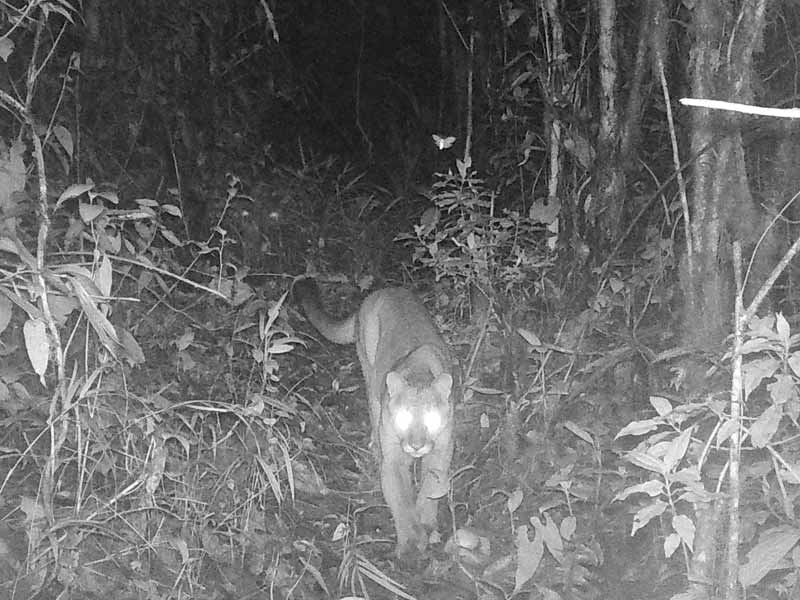
Puma caught on camera trap in Neblina. Photo: Rainforest Concern.
The reserve currently comprises around 2,300 hectares of tropical montane 'cloud' forest. Rainforest Concern has successfully applied for and been granted Protected Forest status by the Ecuadorian Ministry of Environment for the main body of the reserve and was granted a further expansion of the protected area in 2018. A large area of the reserve has recently also been awarded a further legal protection in Ecuador called the National System of Protected Areas.
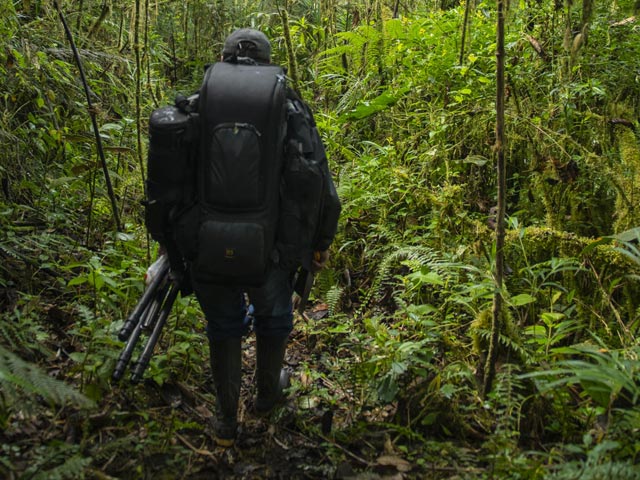
Milton Arcos, one of the forest guards responsible for setting the camera traps. Photo: Murray Cooper for Rainforest Concern.
Protection includes strategic expansion of the reserve, managing, monitoring, research and patrolling - employing forest guards from the nearby communities, supporting communities with sustainable income initiatives, helping the community secure community watershed forest reserves, and putting in place long term legal protections.
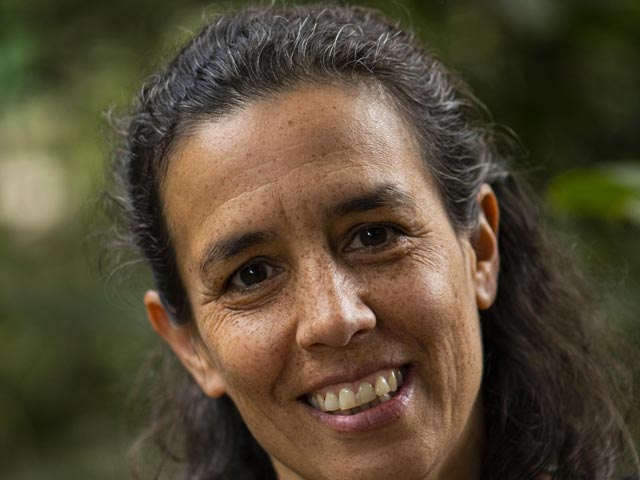
Sonja Dillmann, field coordinator for the project. Photo: Murray Cooper for Rainforest Concern.
Why have we chosen to partner with Rainforest Concern?
South America is of course not a region Nature Travels currently offers as a destination for outdoor activities, though Bob and Sofia from the team have travelled in Ecuador (and loved it!). It's a beautiful, warm and welcoming country and we'd strongly recommend a visit!
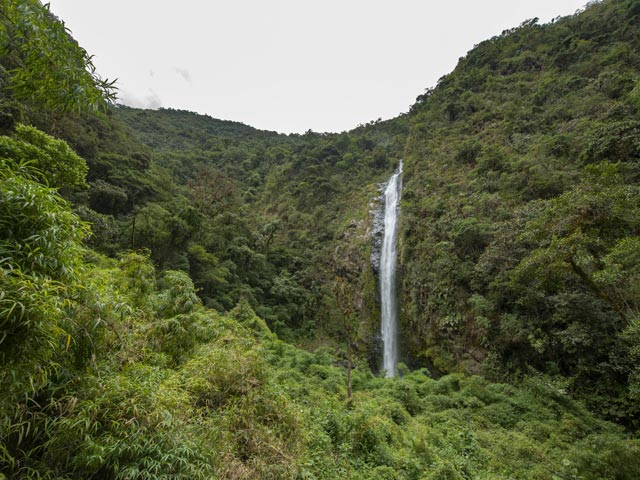
Photo: Murray Cooper for Rainforest Concern.
We've chosen to partner with Rainforest Concern because, like Nature Travels, it is a small-scale, personal organisation with a specific focus. This means that the contributions made by Nature Travels guests can make a real difference, even though the total value of donations will of course be lower than those that can be made by larger companies.
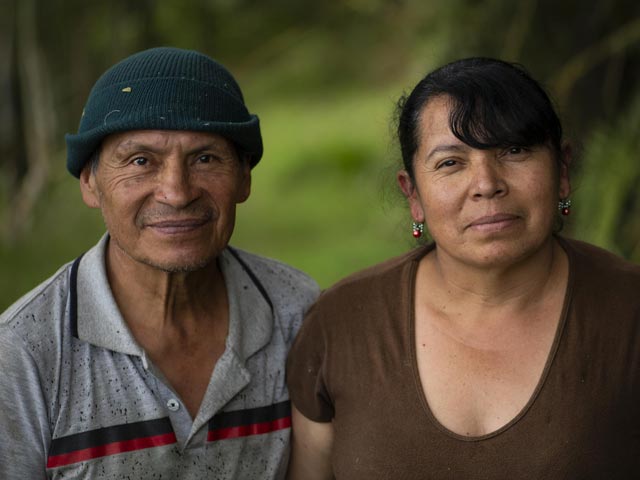
Photo: Murray Cooper for Rainforest Concern.
As donations are very targeted, it allows us to have a closer relationship with the development of the project and the benefits your contributions are bringing - keep an eye on the Nature Travels Facebook Page for updates!
Can I donate to Rainforest Concern directly?
Yes, you can donate directly at any time via the Rainforest Concern website, where you can also choose to become a member or join their Forest Twinning project.



